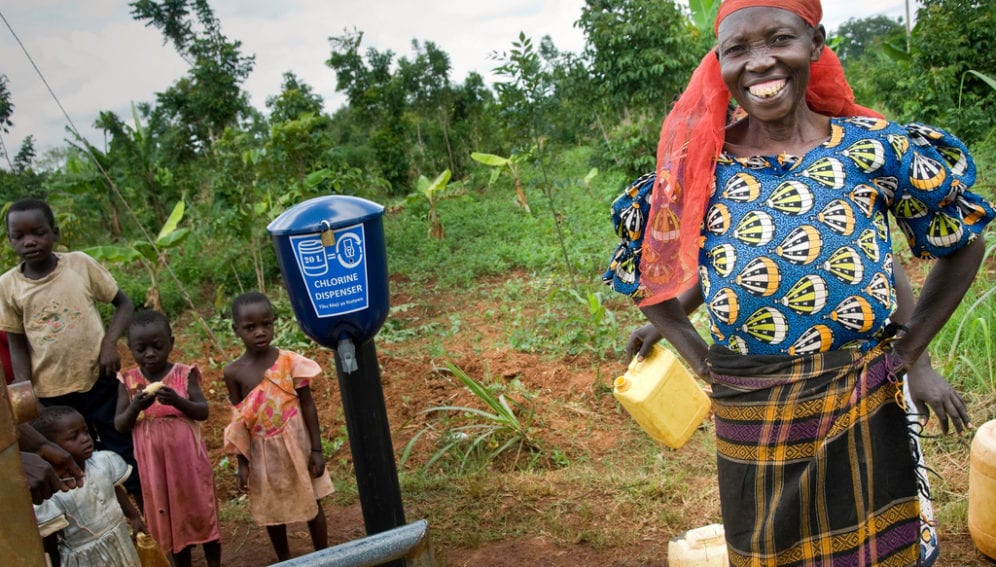By: Katia Moskvitch
Send to a friend
The details you provide on this page will not be used to send unsolicited email, and will not be sold to a 3rd party. See privacy policy.
A non-profit US organisation that develops affordable farming and water purification tools for families in developing countries is moving to a new strategy: selling its tech directly to communities of poor people rather than only to NGOs who give it away for free.
Compatible Technology International (CTI), which is based in Minnesota, United States, designs and sells innovative, affordable devices that help people avoid waterborne infection, improve food production and boost incomes. It has ongoing projects in Haiti, Nicaragua and several African countries.
While CTI historically sold technologies to other charitable organisations that distributed them to farmers, its new strategy for 2014-2017 will see CTI teams also work directly with local partners to support manufacturing, sales and training.
CTI, which was founded in 1981, designs its tools in collaboration with smallholder farmers, who evaluate the prototypes and provide feedback, and say they believe they can achieve more widespread impact with regional sales agents.
“Not only do the tools need to be desired and effective, for new technologies to be fully accepted into communities, it’s important that they’re affordable, well-built, easy to use and culturally appropriate. This is what it means for technology to be ‘compatible’,” says Meghan Fleckenstein, CTI’s spokesperson.
New strategy
The first part of the new plan is to turn existing prototypes for grain, legume and vegetable processing into tools that are ready for large-scale dissemination, which will — among other things — require design modifications to enable local manufacturers to produce the tools.
Second, CTI will start working to develop regional distribution hubs to get those tools to those who need them most. It will also create business training kits designed to help female entrepreneurs develop business based on their tools. These will include information on micro-loans to buy the tools and business model templates.
Finally, the organisation aims to cultivate a global network of innovation experts with whom it will work on future design projects.
CTI says it will prioritise both the creation of ideas and the process of achieving real impact on food security and poverty reduction, says Alexandra Spieldoch, the organisation’s executive director.
“What good is a great tool that sits in a workshop in Minnesota or rusts in a field somewhere? We need to know that our tools are valued and used by those who need them most. For this, we need partnerships for technology development, distribution and rural financing,” she says.
One example of a distribution model that works, says Spieldoch, is the Water Chlorinator programme in Nicaragua, aimed at providing affordable water treatment technology to rural communities. The system attaches to a village’s water tank, delivering a controlled dose of chlorine to kill bacteria and disease-causing pathogens.
CTI’s local staff have trained villagers to build, install and maintain chlorinators, in partnership with Nicaragua-based development organisations (EOS International and Self-Help International).
“More than 220,000 people in over 400 villages have sustainable sources of safe water through this programme,” says Fleckenstein.
The system is easy to build with readily available plastic piping. Installing a new system costs US$150, including four months’ supply of chlorine tablets. Then villagers pay US$3-5 a month for more tablets.
“We also collaborate with the Nicaraguan health ministry, which accompanies our staff to the villages to provide communities with health and sanitation education. In each village, we partner with formal water committees,” says Fleckenstein. “These purchase the Water Chlorinators, maintain the systems and collect a few cents from families in the village to fund the replacement chlorine tablets each month.”
This approach, she says, has been successful over the past year — and CTI is now establishing a similar distribution model in Senegal, applied to grain processing technology.
Postharvest innovation
“We are most known for our grinder, which is a hand-operated burr mill that grinds almost any crop into flour or paste,” says Fleckenstein. The grinder is designed to be used with multiple crops and the burrs that carry out the grinding do not require sharpening and rarely need replacing, unlike many other mills on the market, she adds.
“The simplicity, reliability and adaptability of the grinder makes it a desirable tool in rural communities, where the lack of electricity and readily available replacement parts can be a major barrier to the adoption of new technologies.”
CTI has delivered its grinders to communities in more than 40 countries. The tool reduces women’s drudgery, replacing the traditional mortar and pestle. It also creates jobs in hundreds of new grinding businesses.
“CTI brings top-notch technical expertise and quality standards to every piece of equipment they produce,” says Liz Caselli-Mechael, a technical analyst at Partnering for Innovation, a US Agency for International Development-funded programme to support agricultural technology that can help smallholder farmers.
“They are conscious of every detail, from how screws will expand in tropical climates to how technology use is affected by cultural issues, so farmers get the greatest return on investment from the technology.”
A critical component of CTI’s strategy in developing countries is building local capacity, she adds. “This means working directly with local manufacturers and engineers to handle both production and maintenance of postharvest processing equipment with locally available tools. It is precisely this kind of approach that makes their projects commercially sustainable.”
See below for a video by CTI on the Nicaraguan clean water project:
See below for a video by CTI on its grain processing tools:














